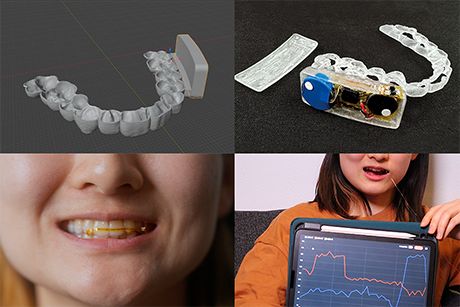Talking Shop with Professor David Gossard

Photo credit: Tony Pulsone
Professor David Gossard (PhD ’75) has been a faculty member of the Department of Mechanical Engineering since he earned his PhD here in 1975, having previously earned his bachelor’s and master’s degrees in mechanical engineering from Purdue University. He began his tenure in the design and manufacturing group and has remained there ever since, but he has also been very interested in computer science and its intersection with mechanical engineering. His research activities included solid modeling and computational geometry, and when the computer-aided design (CAD) industry was in its infancy, his former students John Hirschtick and Bob Zuffante founded SolidWorks, whose software for desktop 3D solid modeling became an industry leader. He always had a strong interest in education, and that tendency has directed a lot of his attention throughout his decades as a MechE professor. He was one of the first MechE faculty members to teach an MITx course on the edX platform (last spring, senior lecturer and principal research scientist Simona Socrates taught 2.01x). His fundamental dynamics course, 2.03x, debuted on edX this past October.
What inspired you to be one of the first professors to teach an MITx course on the edX platform?
A very large fraction of my professional life has been focused on education. I care a lot about teaching and how kids learn, and the edX platform is a computer-based technology that appeals to my nature. I’m intrinsically interested in education in general and online education in particular. It is the wave of the future, and I would rather be a part of it than watch it go by from the sidelines.
Looking at this through the eyes of a dedicated educator of almost 40 years, why are MITx courses so beneficial to students?
There are several things. One is that there is a powerful element of scale to this. The MIT classes I teach are about 100 to 150 students each, and to date everything is done on paper. But my MITx class has more than 9,000 registered students. The second is instant feedback. When you turn in a problem set, TAs and faculty members do their best to give MIT students some feedback, but of necessity it’s delayed by at least a week in time. This platform gives them instant feedback. Not only does it tell them when they’re wrong, but it also gives them hints as to why. And that feedback is infinitely scalable.
How does the element of scale affect the quality?
You can ask questions online in a discussion forum, and these forums are monitored by TAs, but there is an aggregating process. You can’t respond to 1,000 or 10,000 emails. But you can have TAs read dozens of emails and extract common questions. One of the things we did was experiment with virtual office hours where those questions get extracted and aggregated. Then a single professor creates a video response to the most popular questions, and that response does scale. Is it the same as you sitting across the table from me? No. But to me the questions is, “How do you use technology that is at your disposal to address questions of scale in education?” That is what this is all about. It’s a big work in progress.

